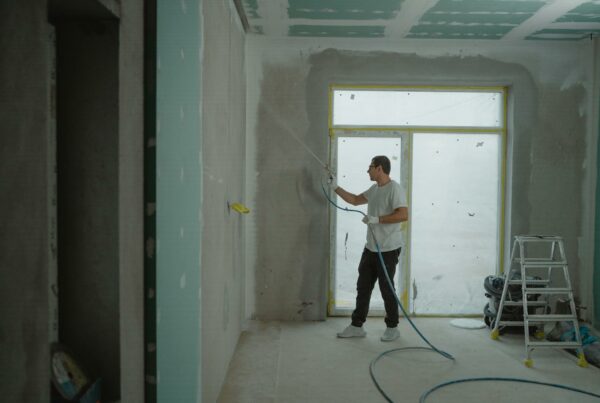Last Updated on April 10, 2024
In the realm of home renovation, few endeavors hold as much transformative potential as the removal of load-bearing walls. These walls, vital for structural integrity, often inhibit the flow and functionality of living spaces. Yet, with careful planning and professional guidance, the removal of such barriers can open up new possibilities for interior design, fostering a sense of spaciousness and modernity within the home.
Understanding Load Bearing Walls
Before embarking on the journey of load-bearing wall removal, it’s crucial to grasp their significance within the framework of a building. Load-bearing walls are those that support the weight of the structure above them, transferring it down to the foundation. Identifying these walls accurately is paramount to avoid compromising the stability of the entire edifice. Consulting with a structural engineer or a qualified contractor can provide invaluable insights into which walls can be safely removed and which must remain intact.
Planning and Preparation
Successful load-bearing wall removal begins with meticulous planning and preparation. This involves not only determining the structural implications but also considering the aesthetic and functional goals of the renovation. Careful attention must be paid to relocating utilities such as electrical wiring, plumbing, and HVAC ducts that may run through the wall. Additionally, obtaining the necessary permits and approvals from local building authorities is essential to ensure compliance with building codes and regulations.
Execution and Structural Reinforcement
Once the planning phase is complete, the execution of load-bearing wall removal can commence. This typically involves temporary shoring to support the weight of the structure while the wall is removed and replaced with appropriate structural supports. Reinforcing the surrounding framework with beams, columns, or headers is often necessary to redistribute the load and maintain structural integrity. Experienced contractors employ advanced techniques and specialized equipment to carry out this phase safely and efficiently, minimizing disruption to the household.
Design Integration and Finishing Touches
With the structural modifications in place, attention can turn to integrating the new space seamlessly into the existing design. This may involve refinishing floors, walls, and ceilings to create a cohesive aesthetic throughout the renovated area. Careful consideration should be given to lighting, furniture arrangement, and other elements to maximize both functionality and visual appeal. By blending form with function, the renovated space can fulfill its potential as a central hub of activity within the home.
Safety Considerations
Throughout the process of load-bearing wall removal, prioritizing safety is paramount. Contractors must adhere to strict safety protocols to minimize the risk of accidents or structural failures. This includes the use of proper safety equipment, such as hard hats, gloves, and safety harnesses, as well as ensuring that work areas are clear of debris and hazards. Additionally, implementing a thorough risk assessment and contingency plan can help mitigate unforeseen challenges that may arise during the renovation process.
Cost and Timeline
The cost and timeline of load-bearing wall removal can vary depending on factors such as the size of the wall, structural complexity, and desired design outcomes. Homeowners should budget for expenses related to engineering assessments, permits, materials, and labor. It’s essential to work closely with contractors to establish a realistic timeline for the project, taking into account any potential delays or unforeseen complications. While the investment required for load-bearing wall removal may seem significant, the long-term benefits in terms of increased property value and improved quality of life often justify the expense.
Consultation and Collaboration
Finally, successful load-bearing wall removal relies on effective consultation and collaboration between homeowners, contractors, architects, and structural engineers. Open communication channels facilitate the exchange of ideas, ensuring that the renovation aligns with the homeowner’s vision while adhering to structural and safety standards. By leveraging the expertise of professionals and actively participating in the decision-making process, homeowners can navigate the complexities of load-bearing wall removal with confidence, ultimately achieving a result that exceeds expectations and enhances the overall livability of their homes.
Redefining Living Spaces
In conclusion, the removal of load-bearing walls represents a transformative endeavor in home renovation, offering the opportunity to redefine living spaces and enhance functionality. Through careful planning, precise execution, and thoughtful design integration, homeowners can unlock the full potential of their dwellings, creating environments that reflect their lifestyles and aspirations. While the process requires expertise and attention to detail, the rewards are ample, yielding spaces that are both structurally sound and aesthetically pleasing. With the guidance of qualified professionals, the art of load-bearing wall removal can turn a house into a truly customized home, tailored to meet the unique needs and preferences of its inhabitants.





